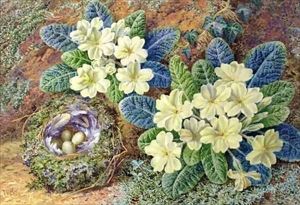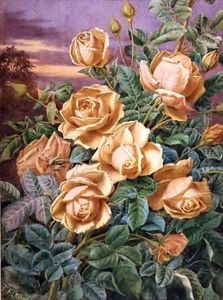Thomas Frederick Collier Paintings
Thomas Frederick Collier was a British artist, born in 1840, known for his landscape and genre paintings. Although not as widely celebrated as some of his contemporaries, Collier was a skilled painter who captured the British countryside with a particular sensitivity to light and atmosphere. His paintings often reflect the beauty of the English landscape, imbued with a sense of tranquility and pastoral elegance.
Collier was associated with the second generation of the Heidelberg School, a group of artists who worked in the Heidelberg area near Melbourne, Australia, and were known for their plein air approach to painting, capturing the light and color of the Australian bush. However, Collier's contribution is primarily rooted in his works in the United Kingdom. His style was influenced by the Pre-Raphaelite movement, which emphasized meticulous attention to detail, vibrant colors, and an almost photographic realism. Collier's landscapes and rural scenes are marked by these qualities, although he did not strictly adhere to all Pre-Raphaelite principles.
The artist exhibited regularly at the Royal Academy from the 1860s onwards, and also showed his works at venues such as the British Institution and the Royal Society of British Artists. Despite these exhibitions, Collier did not achieve the same level of fame as some of his peers. His works were appreciated by a modest circle of patrons and the art-loving public, but he did not gain the critical acclaim or financial success of some other artists of the era.
Thomas Frederick Collier continued to paint throughout his life, finding solace and inspiration in the English landscape. He passed away in 1891, leaving behind a legacy of work that captures the idyllic and often changing English countryside of the late 19th century. Today, Collier's paintings can be found in various art collections and are occasionally displayed in exhibitions focused on Victorian art and landscape painting. His contribution to the art of this period provides a window into the rural and pastoral scenes that characterized much of Britain during his lifetime.

